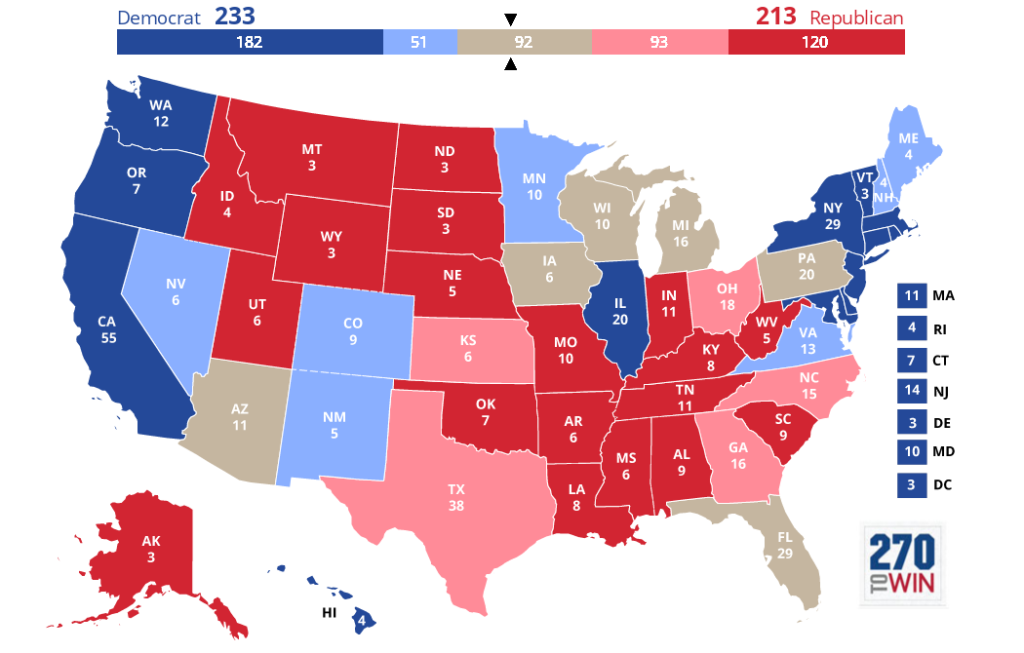I thought I’d share my current analysis of the Electoral College landscape for the 2020 Presidential election. I’m still collecting data and tweaking algorithms but, since I’ll be doing that for the next couple of years, a work-in-progress snapshot seems appropriate.
I find it seriously counter-productive to ignore facts when trying to formulate a game plan. Otherwise, I might be the President! Since I’m not, I do try to let data dictate conclusions. I won’t claim, however, that my algorithms aren’t influenced by my politics. Live with it.
The “rules” of my landscape map are as follows:
- I assume that the 2020 Republican ticket is Trump/Pence, the Democratic ticket is TBD, and there is no significant third-party ticket. Even a relatively weak third-party ticket would likely guarantee Trump a second term given the rules of the Electoral College.
- There are only five state classifications in this map: Safe D (blue), Likely D (light blue), Toss-up (grey), Likely R (light red), and Safe R (red).
- Safe states will vote as defined in 2020, regardless of the Democratic ticket.
- Likely states will generally vote as defined in 2020. The opposing party will face an uphill battle in these states and the Democratic ticket will define the slope of the hill.
- Toss-Up states aren’t pre-aligned and the 2020 Democratic ticket will fully determine who has the initial upper hand.
- For simplicity, I’m assigning all of Maine’s and Nebraska’s Electors the same statewide classification even though their Electors are possibly split. The simplification very slightly favors Republicans, which is fine for my purposes.
Below is my current landscape map of the 2020 Electoral College (using 270toWin‘s build-your-own map feature):

At least for the moment, my analysis shows that a generic Democratic ticket will start from a slightly stronger position than Trump/Pence. While that’s good news, this is only a baseline. The actual Democratic ticket will matter. It will only matter in the 18 Likely/Toss-Up states, but it will matter.
Concurrently in 2020, 12 of the 18 in-play states will also elect a U.S. Senator and 2 of them will elect a Governor. These statewide races will trade impacts with the Presidential race in each state and my current analysis says that zero of these statewide races are total slam-dunks for the incumbent party. It’s going to be interesting.
In future posts, I plan to use this framework to discuss possible Democratic strategies and tickets to win an additional 88 Electoral votes from the 246 available in the 18 in-play states. As I’ve said before, the Electoral College is THE ONLY game that matters for the Presidential election. I may hate the rules of the game, but it’s the game we’re playing.